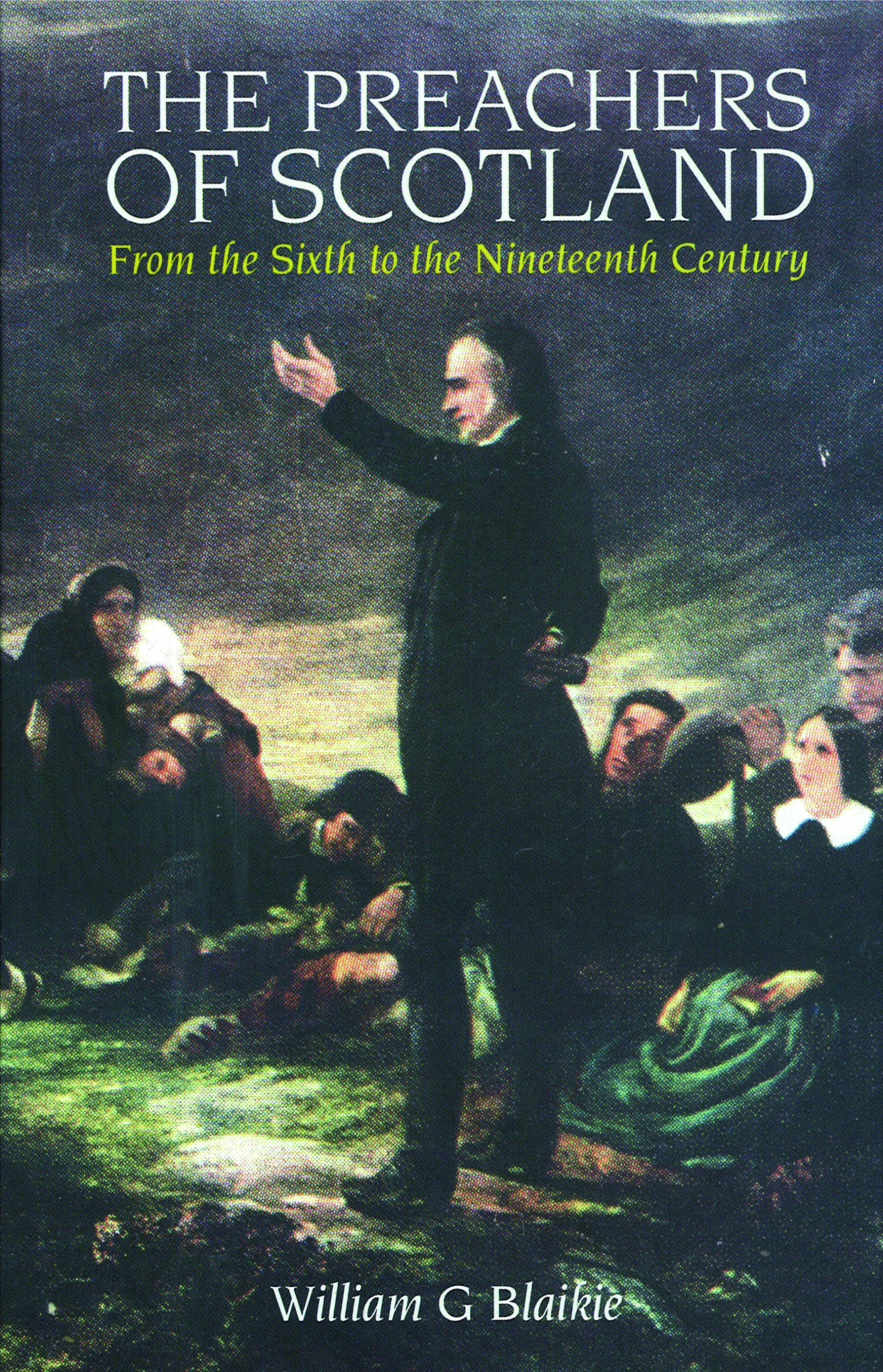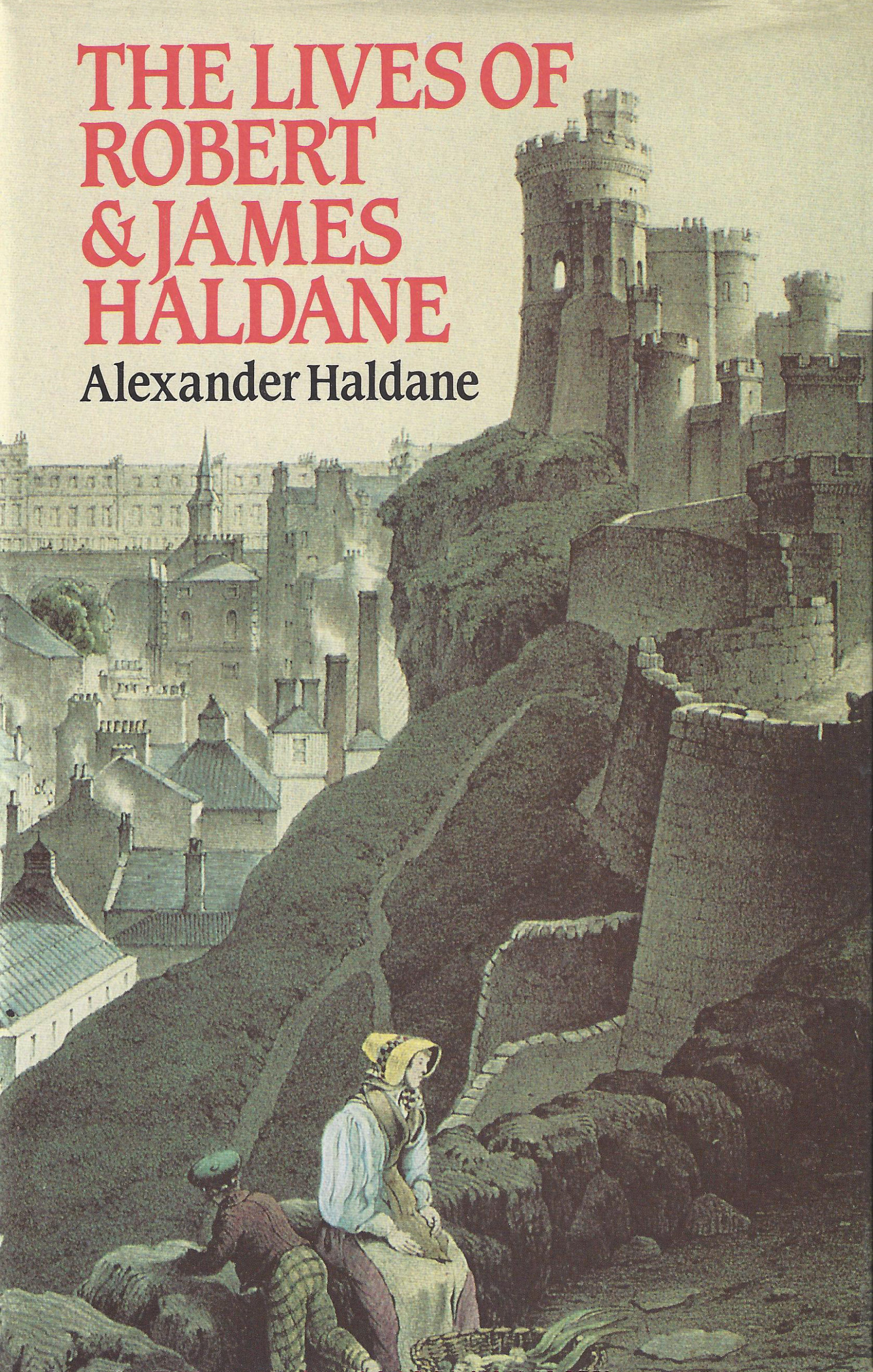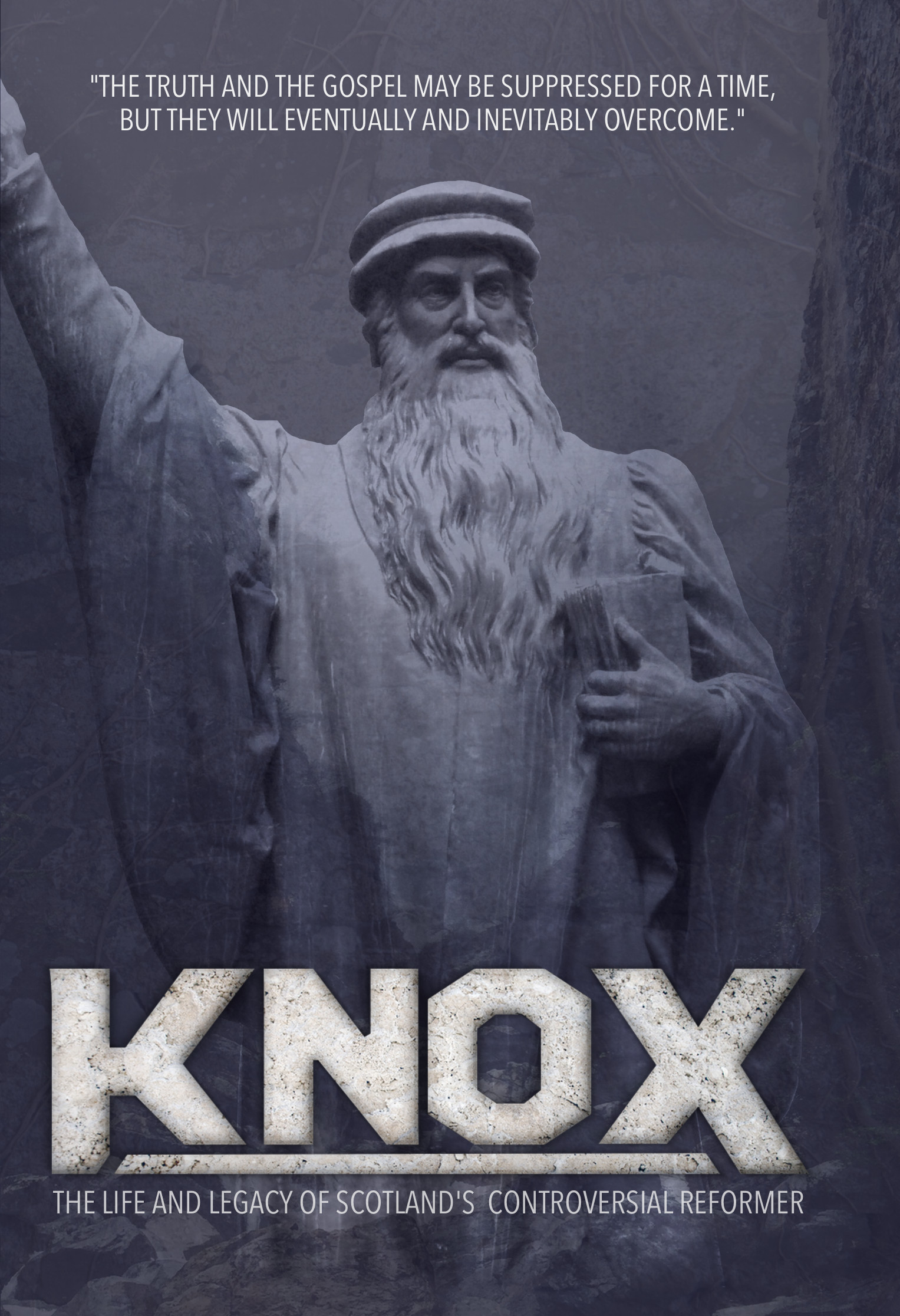Rowland Hill in Scotland
You could not ignore or overlook Rowland Hill. He was not that kind of person.
To most of his fellow-Anglicans Rowland Hill was a rogue elephant or a bete noire, to Evangelical Anglicans like Charles Simeon of Cambridge University an embarrassment, to Baptists an object of suspicion as he often treated them with disdain, but to ‘irregular’ Anglicans like Thomas Scott and Henry Venn an inspiration and a natural leader and to Evangelical Independents or Congregationalists a warm friend and a supporter of worthy causes like Sunday schools and the London Missionary Society.
Although undoubtedly spiritual, Hill had many obvious faults. Of aristocratic descent, he sometimes had pride and manners to match, and the undistinguishing could not always tell the difference between his irony and his sarcasm and between his jokes and his jibes. He was ‘very impatient of anything approaching to contradiction, and ceased to converse pleasantly when a difference of opinion arose’ and ‘his estimates of character were not always judicious.’
But the crowds warmed to his colourful personality and his quaint mannerisms and saucy, outspoken remarks, enjoyed his telling anecdotes and loved his zealous, outgoing character. During the Gordon riots of 1780, Hill drew London crowds of about 20,000 and the formidable Countess of Huntingdon called him a second Whitefield. Like Whitefield, Hill shocked his college authorities as an undergraduate by visiting prisoners in the county jail, fell foul of the bishops — six bishops refused him ordination and he never was ordained priest, going through life ‘wearing only one ecclesiastical boot’, as he put it — and was very eloquent. The dramatist Sheridan once said ‘I go to hear Rowland Hill because his ideas come red-hot from the heart.’
For poking fun at her ladyship from the pulpit Hill was excluded from the Countess of Huntingdon’s chapels, and in 1783 the Surrey Chapel in Blackfriars Road was built for him. This large building was for many years blessed with large congregations and a fine organist to lead the inspiring singing. It was often attended by Rowland’s brother, Sir Richard Hill, MP for Shropshire and one of the chapel’s original trustees.
In 1798 Rowland Hill, almost 53 years old, went up to Scotland for the first time. He had been recommended by John Campbell, the humble, much-used Christian ironmonger of Edinburgh, to Robert Haldane as the man most suited to open the hired Circus theatre building as a preaching station or Sunday evangelistic centre. Haldane was a wealthy Church of Scotland layman, not long a Christian, who had just left for ever his beautified estate near Stirling and with his wife’s backing had deliberately reduced his standard of living by moving into a house in Edinburgh’s New Town, in order that he might finance home evangelism centred upon the Society for Propagating the Gospel at Home.
Hill could afford the time away from London as it was his practice to spend some six months each year away from his congregation itinerating as a Calvinist Methodist. Edinburgh charmed him in July with its romantic setting but grieved him because its Christianity was so much below the standard he had imagined.
By chance, on the way to Edinburgh, Hill had met James Haldane, Robert’s younger brother, and John Aikman at Langholm where the sights and sounds at the public fair brought Hill his first disillusionment with Scotland. Accidentally meeting the parish minister Hill learnt from him about the two passing strangers ‘that it was a marvellous circumstance, quite a phenomenon, that an East India Captain (James Haldane), a gentleman of good family and connexions, should turn out an itinerant preacher; that he should travel from town to town, and all against his own interest and character.’ Hill must have recalled similar words passed against himself by his parents when with Whitefield’s written encouragement he took to village preaching as a Cambridge undergraduate. Haldane and Aikman, in fact, were finishing their second great tour, a six-week tour of Southern Scotland. As on their important pioneering tour of Northern Scotland the previous year, crowds heard the two laymen, individuals turned to God and Sunday schools for children and their parents were formed.
Hill’s second Scottish disappointment: came on his second day when he discovered that no sermon ever accompanied a Scottish funeral. The next day he noted that the ‘churches in Scotland evidently seem the only neglected buildings.’
On 29 July Hill opened the Circus at the bottom of Little King Street.
Hundreds attended the morning service but many more the evening service. Using the theatre as a church was not a new thing but many probably came out of curiosity, either to sit in a gallery and hear a minister preach from a stage or to hear for themselves the ‘eccentric’ Englishman with his witticisms and racy preaching style.
By Hill’s second Sunday at the Circus the service times had been changed to avoid clashing with public worship in other churches. At 7 a.m. there was a sizeable congregation, at noon the theatre was full and in the evening hundreds if not thousands could not gain entry, and those who did grew afraid that the galleries might collapse, so the service was held a quarter of a mile away at Calton Hill. Here about 9,000 heard Hill preach on the prodigal son.
Hill also preached on weekdays. With 35 years’ itinerating experience in three kingdoms behind him he soon made his tall, commanding presence felt. Denied a church to preach in at Leith, he cheerfully preached to 2,000 in a timber yard. Nearly 1,000 heard him at Stirling and at Crieff, a full congregation at the Perth Relief Chapel, and at Kinross Lord and Lady Balgowny attended his open-air sermon — it was a triumphant August progress and Hill’s host Robert Haldane was there to see it. Then they went to Glasgow where 5,000 heard Hill’s sermon on ‘Thy God thy glory’, to Paisley where nearly as many gathered, to Greenock where Hill met his friend John Love who had just resigned as the first London Missionary Society Secretary, and so back to Glasgow where a happy evening was spent with Dr Robert Balfour and other Evangelical ministers. Paisley was called by Hill ‘the paradise of Scotland’ as the town had ‘good Ministers of different denominations, all living in affectionate love and cordiality with each other.’
Returning to Edinburgh, Hill preached at Calton Hill on the searching verses of Mark 8:36-37 to about 15,000, probably the largest Scottish congregation since the high days of Whitefield, and the most solemn congregation Hill had seen for many years.
Now James Haldane replaced his brother as Hill’s riding companion and took him to the Earl of Leven’s home on the way to Dundee, where the crowd numbered 2,000, and to St. Andrews where Hill preached twice. On two more Sundays in Edinburgh crowds approaching 20,000, equal to a quarter of Edinburgh’s population, heard Hill’s eloquent pleadings, before he left on 7 September for England with Robert Haldane in his phaeton. As a founder in 1776 of the Societas Evangelica, which helped settled ministers to itinerate in their districts, Hill was happy to help the young Society for Propagating the Gospel at Home which had begun so vigorously. As a crowd-puller Hill had fully justified Campbell’s recommendation of him and had set a hot pace for the string of English Calvinist Evangelicals who followed him to the Circus at Edinburgh. It was estimated that 200 people were converted to God as a result of Hill’s Scottish visit.
Hill’s first visit to Scotland overlapped with Simeon’s second. But Simeon kept to churches and deliberately covered much of the ground covered the previous summer by James Haldane. Like Simeon, Hill was an English novelty in Scottish pulpits and as a gentleman by birth was acceptable to the Evangelical nobility. But Hill was equally acceptable to the man in the street for his manner of preaching, for the sense of fun and emotion he brought into the pulpit and for his spontaneous comments.
To quote one of his biographers, Hill’s ‘method of preaching was a complete novelty in Scotland, except to a few aged persons who recollected the visits of Whitefield. An anecdote in a Scottish pulpit was an experiment that no Presbyterian would have ventured on; but those told by Mr Hill were so lively and affecting, that his hearers were raised to the highest pitch of interest.’ Campbell in his old age said much the same thing of Hill: ‘During some of his sermons the eternal world appeared to be next door to us, and but a step between us and the judgment day, which seemed to cause a shaking among the dry bones. Not that Mr Hill preached a different gospel from what we had been accustomed to hear . . . but there was a general formal sameness [in others’ sermons], seldom what was striking or catching.’ Campbell referred particularly to Hill’s burst of zeal for the salvation of his hearers and his intermingling of striking facts relating to himself and others.
According to Robert Hall, the English Baptist minister who was himself a great orator, ‘no man has ever drawn, since the days of our Saviour, such sublime images from nature’ as did Hill. And according to Hill himself, referring to non-churchgoers, ‘Plain language is the only profitable language for sinners like these. How ridiculous to try to get into the hearts of such by a dry, set, formal methodical discourse!’
Unlike Simeon with his clear, orderly style of preaching, Hill had a style that was disorderly and rambling. One Surrey Chapel attender once remarked after a sermon, ‘Well, Mr Hill, you have taken us over the whole land, from Dan to Beersheba.’ ‘Yes’, said the unrepentant Hill, ‘and it is all holy ground!’ It was not the main points of the sermon so much as the odd phrase, the memorable anecdote or the cumulative weight of Hill’s forceful earnestness that generally impressed his hearers.
So Hill taught Scotland a new and lively preaching style, though he was pleased to find that the usual practice in Scotland was to expound whole passages of Scripture at a time, for ‘as it was certainly the most primitive, so surely it must be the most profitable, to deal with people direct from the word of God.’
In the early part of 1799 many Scots, including many Evangelicals, were angered or at least disappointed by the publication of Hill’s Journal of his 1798 visit to Scotland. For in this book Hill criticised and condemned all the Presbyterian Churches except the Relief Church. Nor did Independents and Baptists escape his censures, the irony of this being that in February the Haldanes, Ewing, Campbell, Aikman and many others had formed a Congregational church out of the Circus meetings in Edinburgh. Hill tried to give a bird’s-eye view of recent Scottish church history but he was not a knowledgeable historian. Unhappily the Journal contained too many cheap jibes and his printers were right in the 74-word title of his book to set the words ‘Designed to promote brotherly Love and Forbearance’ in the very smallest type! The truth is that Hill had always thought Presbyterianism was nearer the original and scriptural model than Episcopacy and Independency, and had thought highly of Christianity in Scotland, so his findings there were a bitter disillusionment to him.
Within a year of first visiting Scotland, Hill was back again, this time to open Haldane’s tabernacle at Glasgow under the charge of the Rev Greville Ewing, who had recently left the Church of Scotland ministry. Events were moving fast during Scotland’s spiritual awakening at the turn of the century and in May 1799 the Moderates of the Church of Scotland’s General Assembly mounted a counter-attack against the evangelistic initiative and successes of the Scottish Evangelicals. The Assembly passed a resolution, aimed at men like Hill and Simeon, closing their pulpits to men not educated and licensed in Scotland. Furthermore, the Assembly issued a Pastoral Letter which attacked the Haldanes’ Society at length and by name. This Letter was ordered to be read from every Church of Scotland pulpit.
Unhappily Hill’s reaction to the Assembly’s Acts was so sharp and his preoccupation with answering them so great that his effectiveness as a preacher on this second visit seems to have been blunted. While itinerating for the Haldanes’ Society in June and July, Hill wrote eight letters to the Assembly which were later published in pamphlet form. Forgetting again the unchristian language used by himself and others in the pamphlet war between Calvinists and Arminians after the Methodist Conference of 1775, as well as the advice of his former mentor John Berridge of Everton to ‘Avoid all controversy . . . preach nothing down but the devil, and nothing up but Jesus Christ,’ Hill waded into the attack. He poured scorn on the political charges directed against the Haldanes’ and their many friends, accused the Assembly of wishing to ‘demolish at once the bridge of communication between their church and every other Protestant communion upon earth,’ and insisted that ‘every man has a right to preach the gospel.’ The Evangelicals in the 1799 Assembly who helped to pass its resolutions unanimously, Hill blamed for their ‘criminal silence.’
It was not what Hill said against the Assembly but the manner in which he said it that was unfortunate. One Scot went so far as to say, ‘Satan was clapping his shoulder and whispering, well done, Rowland — it is far better for you to expend your ammunition against the General Assembly than against my kingdom — I thank you, for I have not lost one follower during this second visit of yours.’
Yet crowds attended Hill’s preaching and again people shouted out in amazement ‘the very sodgers [soldiers] are ganging to hear preaching.’ In a Dundee field 8,000 heard Hill and in Aberdeen 3,000. In July, Ewing’s tabernacle seating about 3,000 was filled for Hill’s morning sermon, but in the afternoon when Ewing was preaching an alarm was given that the building was collapsing and in the rush to get out some limbs were broken. Hill bellowed so much to allay the people’s fears that a sore throat made it impossible for him to preach out of doors that evening.
Not for 25 years did Hill return to Scotland. He was then 78 and many felt this third visit would be his last, and it was, though he had nine more years of life (and therefore of preaching) to give to God. In this final visit to Scotland, Hill is seen in better perspective as regards his spiritual stature. He is the grand old veteran campaigner, respected and welcomed everywhere. Christians of all denominations, especially his old friends, were delighted with his unexpected visit. In his few days at Edinburgh, Hill preached to 1,500 in John Aikman’s Congregational Church, to even more in Dr Peddie’s Secession Church and in James Haldane’s Baptist Church. In Glasgow, in the short time there, Hill was just as busily engaged in the solemn task of preaching. After preaching in Paisley Abbey he reached Greenock, where several days’ holiday took him to some of the neighbouring lochs. Finally he took a steamship to Liverpool and Scotland’s loss became England’s gain.
This article was first published in the July-August 1973 edition of the Banner of Truth magazine.
More Scottish Church History

Preachers of Scotland
From the Sixth to the Nineteenth Century
Description
You could not ignore or overlook Rowland Hill. He was not that kind of person. To most of his fellow-Anglicans Rowland Hill was a rogue elephant or a bete noire, to Evangelical Anglicans like Charles Simeon of Cambridge University an embarrassment, to Baptists an object of suspicion as he often treated them with disdain, but […]

Description
You could not ignore or overlook Rowland Hill. He was not that kind of person. To most of his fellow-Anglicans Rowland Hill was a rogue elephant or a bete noire, to Evangelical Anglicans like Charles Simeon of Cambridge University an embarrassment, to Baptists an object of suspicion as he often treated them with disdain, but […]

KNOX
The Life and Legacy of Scotland's Controversial Reformer
Description
‘The Truth and the Gospel may be suppressed for a time, but they will eventually and inevitably overcome.’ Cinematic Trailer Documentary Description Renegade. Reformer. Revolutionary. Five centuries after his birth, the influence of John Knox can still be felt right across Scotland. But who was this man? What did he do and why is he today […]
Latest Articles
Finished!: A Message for Easter 28 March 2024
Think about someone being selected and sent to do an especially difficult job. Some major crisis has arisen, or some massive problem needs to be tackled, and it requires the knowledge, the experience, the skill-set, the leadership that they so remarkably possess. It was like that with Jesus. Entrusted to him by God the Father […]
Every Christian a Publisher! 27 February 2024
The following article appeared in Issue 291 of the Banner Magazine, dated December 1987. ‘The Lord gave the word; great was the company of those that published it’ (Psalm 68.11) THE NEED FOR TRUTH I would like to speak to you today about the importance of the use of literature in the church, for evangelism, […]
